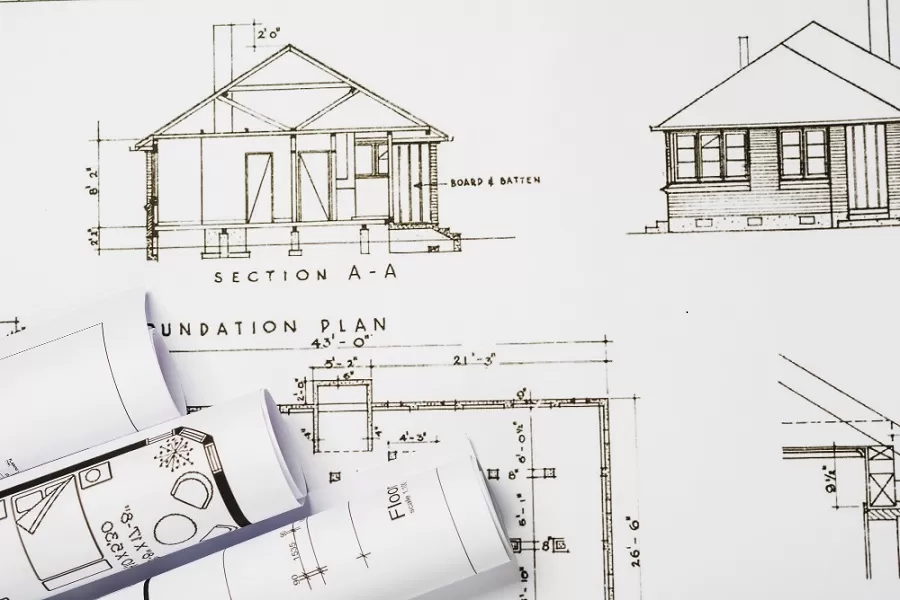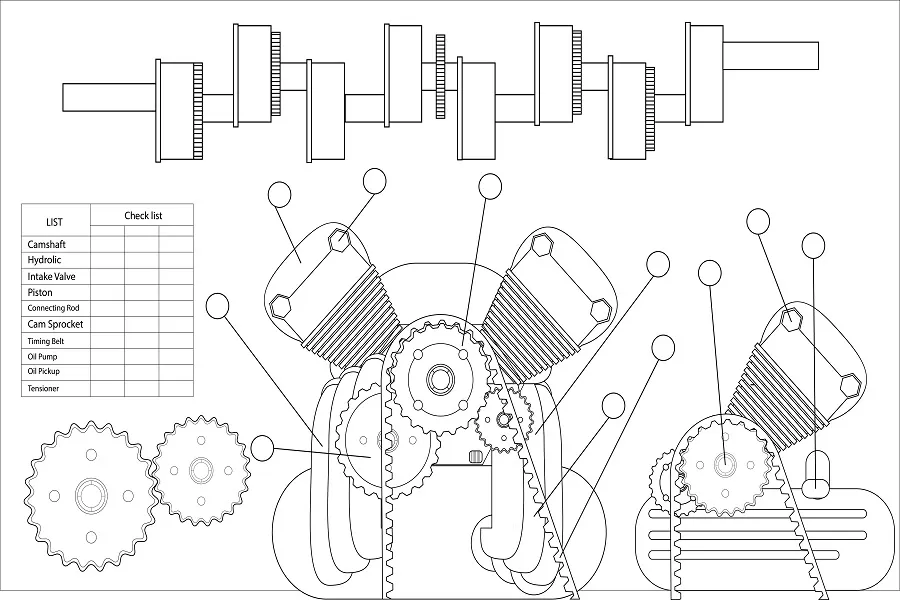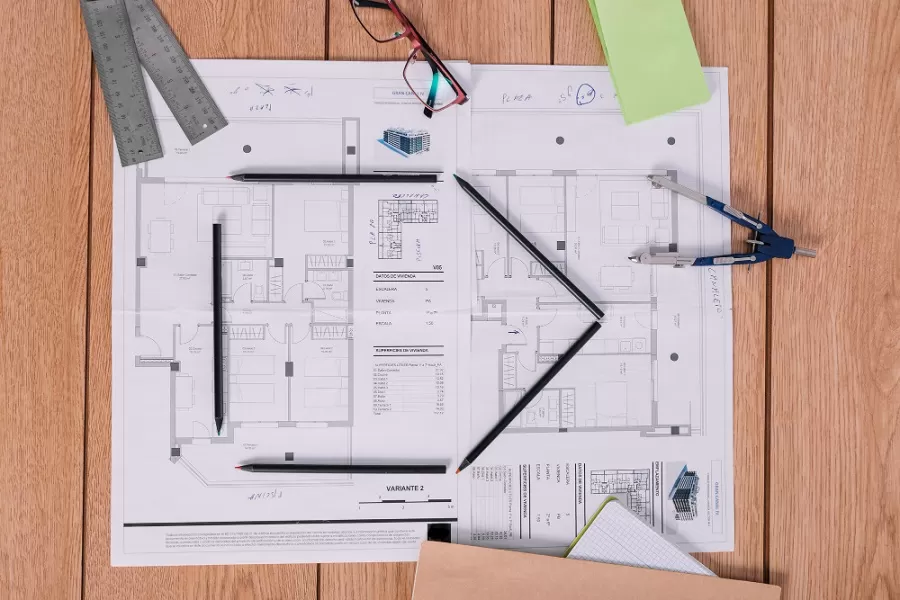The architecture, engineering, and construction (AEC) industry is undergoing a major facelift. New technologies are emerging and are quickly making their way into the construction sites. Thus, revolutionizing the way we plan, build, maintain, and sustain the structures in the real world.
‘Connected construction’ has become a new norm. Today, all construction companies, big or small, are trying to leverage the digital tools and technologies to bring their assets, people, and processes on one holistic platform. These tools not only help them enhance their operational efficiencies, but also aid in improving construction cost estimation, reducing the downtimes, and strengthening the bottom lines.
In this article, we’ll take you through the top 10 trends that will impact the construction industry in the year 2022 and beyond. Get aware of these technological advances to stay competitive and at the forefront of Building technology.
1. Building Information Modeling Has Been Disrupting the Way We Approach Building Design & Construction
Virtual design and visualization have opened up new avenues in the construction industry. Advanced technologies, like Building Information Modeling (BIM), are being used by engineers and architects to model and envision their constructions before bringing them to reality. From improving the construction designs to identifying clashes, reducing time, and preventing cost overlays, BIM construction services guarantee numerous benefits.
But that benefits of BIM do not end here. Thanks to BIM 360, today builders, architects, engineers, and owners are able to connect, collaborate, and coordinate with each other, at any time and from anywhere. This uninterrupted connectivity helps them efficiently manage their documents. streamline workflows, improve work proficiency, and resolve coordination issues.
In short, BIM is quickly bringing a paradigm shift in the AEC industry. In the Year 2022, more and more engineers, architects, and builders will outsource BIM services to experts to accurate their designs and construction workflows. As of 2020, the BIM market was worth $4.5 billion to $5.2 billion. it is expected to grow at a CAGR of 12.5% over the next five years.
2. Construction Robotics Will Automate Repetitive Tasks, Save Time
Construction robotics will change the face of C&E industry for good. The Year 2022 will witness increased adoption of construction robots to automate routine, labor-intensive tasks. For example, construction robots find excellent use in bricklaying, load lifting, welding, concrete works, painting, rebar tying, demolition, and more. They help to reduce the operational time and minimize losses due to human-induced errors and fatigue. They also increase the overall workforce productivity and the efficiency of the construction company.
3. Modular Construction Will See Higher Adoption
After decades of slow adoption, the construction industry will make an at-scale shift toward modularization in the year 2022. One of the biggest construction industry trends, modular construction, or offsite construction, allows builders and engineers to design, construct, and fabricate building elements in a factory. Thus, helping them significantly bring down the on-site construction costs, material wastage, construction delays, and contingency fees. It also helps to accelerate the time to construction from 20 to 50 percent.
4. Advanced Building Materials Will Find Increased Use in Construction
We will see a significant shift toward the utilization of innovative and sustainable materials in building design and construction. Materials that are durable, easy to maintain, energy-efficient, lighter in weight and biodegradable will find more use in the construction industry. Bioplastics, Mycelium composites, Biofoam, Hydroceramics, and Nanomaterials will form a significant part of the trend.
5. Green Building Design Will Be the Core Focus
Thanks to the stricter environmental laws and regulations, Green Building has become a popular concept in E&C and the construction industry is quickly pacing toward greater environmental sustainability. From pre-construction planning to Building energy modeling and from Daylight Simulation to ensuring net-zero carbon emission, construction engineers are utilizing BIM Energy Modeling and Simulation Services to optimize their building designs and ensure energy-efficient constructions.
6. Construction Industry Will Move Toward Digital Project Management
Digital project management is another upcoming construction industry trend. It uses AI-based predictive algorithms, ERP software, and cloud-based tools software to optimize construction workflow, distribute resources, and understand the project feasibility. Digital project management also helps construction companies to alleviate construction bottlenecks, while ensuring the timely completion of the project. Going forward, it will become quintessential for every construction company to adopt digital project management tools in their construction workflows. It will help them reduces wastage, increases workforce efficiency, and optimize their construction scheduling workflow and performance.
BIM 360 is one such construction management software that enables AEC teams to seamlessly connect, collaborate, and communicate with each other throughout the building construction lifecycle. By centralizing data and providing uninterrupted access to the entire Design Collaboration and Document Management modules, it helps teams to optimize, accurate, and manage all aspects of construction. It comes with Revit Cloud Worksharing and Collaboration feature that allows designers to securely collaborate with each other and improve their productivity, avoid clashes, reduce rework, and accelerate project delivery.
7. Augmented Reality Will Define the Future of the Construction Industry
The use of augmented reality (AR) is quickly gaining traction in the construction industry. Advanced 3D modeling software and technologies are transforming the way we design and carry out the building construction process. By creating fully interactive models of the buildings, AR enables engineers and architects to take a virtual walkthrough of their constructions, evaluate their designs, spot problems and incompatibilities in real time, and incorporate changes without throwing the job off track.
AR has also provided construction engineers with technologies like smart glasses, IoT sensors, drones, and augmented reality headsets. They have transformed jobsite operations and are helping construction engineers save time, cut costs, and improve worker safety.
AR is also being used as a Marketing Tool to demonstrate building interiors to prospective customers and investors, and is also being used in Commercial Building and Malls to create a Virtual Walk Through.
8. 3D Printing Will Go Mainstream
The year 2022 will witness a growing trend toward 3D printing in construction (for conducive structures). By printing the entire buildings or the prefabricated building components, 3D printing will ensure better resource utilization, less material wastage, and faster and streamlined processes.
9. Pre-Fabrication Will Pick Up Pace
Though prefabrication is being used by construction engineers for decades, the technology will be exploited even more in years to come. In fact, The Prefabricated Buildings Market is expected to grow at a CAGR of more than 5.5% during 2022 – 2027. New technologies will make prefabrication easy to access and integrate into the workflow and engineers will get complete visibility into the design and building process – right from start to finish.
10. Predictive Analytics Will Make Risk Management Easy
With the continuous inflow of data and information, it will become easy for civil engineers to perform predictive analysis. They will be able to analyze the patterns from the captured data, examine the risks, predict outcomes, and develop a proactive action plan to deal with the problems, rather than reacting after the incident has already happened. Apart from better budgeting, predictive analysis will help contractors improve their decision making abilities and come up with accurate designs and constructions.
So gear up, take advantage of these latest technological solutions and improve your construction prowess, while saving your time and strengthening your bottom line.
At Enginerio, we can help you incorporate digital excellence in all your construction processes. We use state-of-the-art technological solutions and industry-leading construction software like AutoCAD, Revit, eQuest, Navisworks, and more, to solve all your design and construction challenges and can help you stay at forefront of digital transformation.
Get in touch with us to know more about our BIM construction services and solutions.




